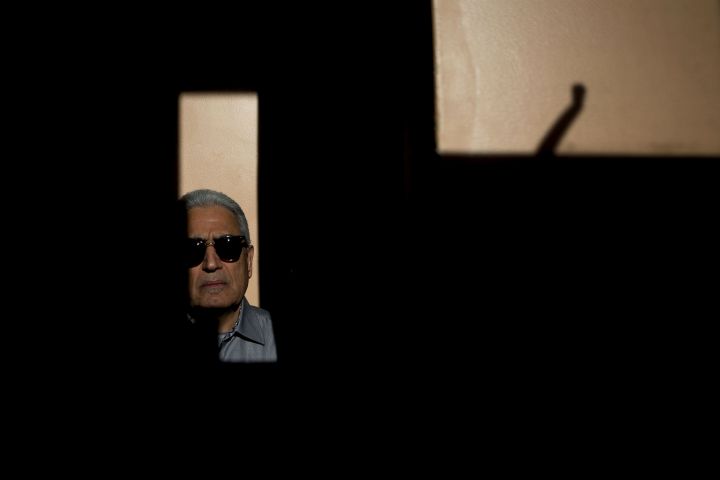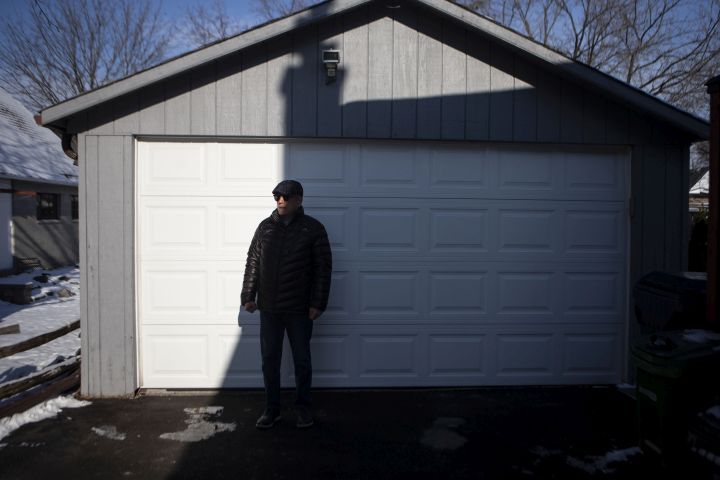Habib Haghjoo cannot look at the only two photographs in his living room at his east Toronto home. But he cannot bring himself to take them down.

Nothing else hangs on the walls in that room of his impeccably clean home.
The photographs show his daughter, Saharnaz Haghjoo, 37, and his eight-year-old granddaughter, Elsa Jadidi, smiling broadly as they embrace.
The pair were aboard a Ukrainian International Airlines flight that was shot down by Iranian forces two years ago, on Jan. 8, 2020. More than 100 of the 176 people killed in the crash had ties to Canada.

Habib Haghjoo says he feels stuck in time, hoping he can have just one more minute with his girls, as he calls them.
“I’m dying to see them,” he says, tears falling from his eyes as he grips an empty cup of tea. “If I look at the picture, or bring any memory to my mind, it starts to hurt deep.”
READ MORE: ‘My heart is going to bleed,’ says Ontario man who lost daughter, granddaughter in plane tragedy
The 65-year-old cannot watch videos of them or leaf through old pictures, saying to do so would hurt too much.
Family, friends and strangers sent him photographs of his daughter and granddaughter after their deaths. After a while he tossed them all except for the two that remain.
“Maybe one day I will put them away, but not right now,” he says.
He’s still stuck in the throes of his grief.
“I am stuck in the anger stage, I am just so angry,” he says. “The regime murdered them, murdered them in the worst possible way.”
READ MORE: Iran prepared to hold bilateral talks on downed jet, foreign ministry says
Lately, he’s also been stuck inside his home. Ontario’s latest round of pandemic restrictions has left him without access to his beloved pool at the local YMCA. The exercise helped him in the immediate aftermath of the tragedy, he says.

Get daily National news
“I was crying and swimming… it helped a lot,” Haghjoo says. “Then the pandemic came and shut everything down.”
Two years later, the pool is closed again. He’s lost the only way he can really exercise with his bad back. And he lost the community there, he says.
“It’s tough,” he says.
- ‘Really challenging issue’: Many B.C. communities still at high risk for flooding
- Cold warnings across the Prairies forecast wind-chill temperatures near -45 C
- Canadian military member arrested, charged in foreign interference probe
- Mailing in your taxes? CRA says changes are coming amid push to digital
READ MORE: Federal government setting up scholarship program to honour victims of plane shot down by Iran
Haghjoo, a computer programmer, left Iran in 1987 for Ireland. One day, while waiting for a meeting, he visited the Canadian Embassy.
He read a copy of the Charter of Rights and Freedoms and fell in love. After four years in Ireland, he, his wife and his four daughters left for Canada. They settled in Richmond Hill, Ont.
He landed in the middle of a recession and it was difficult to find work in his field, so he took a job at a car dealership.
In 1997, his wife, Shahnaz, died of a rare case of meningitis at 37, the same age his daughter was when she died.
“I tried to be the best father and the best mother I could be,” he says.
By 2009, exhausted from his job at the car dealership, he left and became a real estate agent, which afforded him more flexible hours.
He hasn’t worked since the plane crash. He says he isn’t ready.
“I’m not rich, but I can pay my bills,” he says.
He’s depressed and anxious. He forgets what he was saying. He eats little.
But he has managed a few things in the past two years. He and Siamak Jadidi, Saharnaz’s husband, helped build an elementary school in Elsa’s name in a poor part of Iran, in Lorestan province.
“I believe when people are educated, they won’t get fooled by rulers and taken advantage of,” he says.”`Building a school and educating children, that’s what will win eventually. That is how I will get revenge.”
He also helps translate news articles to English for a website started by another family who lost loved ones in the tragedy. The site, Rissmaan.com, highlights human rights abuses in Iran.
Haghjoo used to practise Islam but gave up religion. He visited his daughter and granddaughter’s graves twice after the plane crash but then stopped going. This past summer, however, he found himself drawn back to the cemetery and has since visited a handful of times.
“When I finish my visit, I cannot open my eyes because I’m crying so much,” he says, “but it does help, it does.”
Two years after the tragedy, Haghjoo says he tries to focus on his family — he has four daughters and eight grandchildren, he’ll never stop counting Saharnaz and Elsa among them, he says.
His partner of 15 years is also a tremendous help.
And he tries to focus on the good memories of his daughter and granddaughter.
“Saharnaz was my little one, she was very small, very petite, she was like a small pepper that’s very hot, she was very active,” he says. His daughter worked as a program manager at the YWCA, helping new immigrant women adjust to the country.
“And Elsa, she was a helper just like her mom, she was going to be a fierce, strong woman.”
He smiles at those memories.
Then his face changes.
“Sometimes I feel my daughter hugging me,” Haghjoo says, his voice catching. “I can feel her squeezing me, hugging me. The good memories are also sometimes very painful.”















Comments